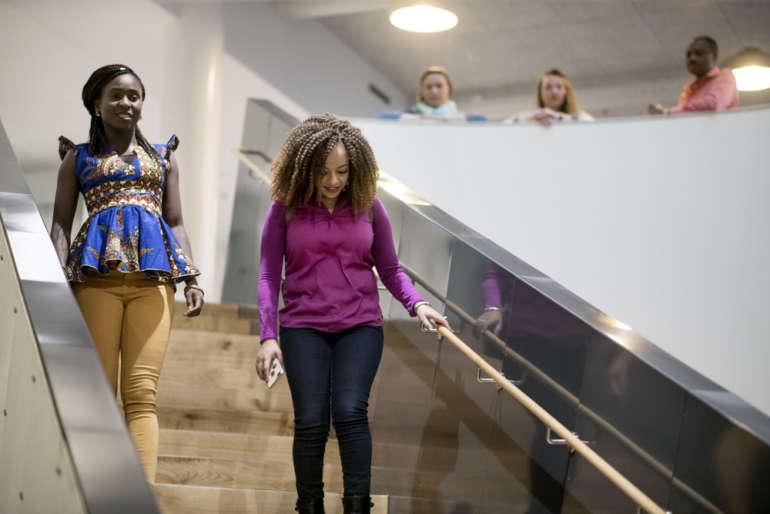Have your say! Nine questions about student feedback

We have been collecting feedback from students at different stages of study for many years now. In the near future, the plan is to develop our course feedback processes to make them more systematic and meaningful to students.
But how exactly and in what stages of study is feedback collected in practice, and how do we analyse it? And how can students benefit by giving their feedback?
We put these questions to Director of Education, Vice Rector Pirjo Hakala and Chair of Board (2017) of the Student Union O’Diako, student Iiris Hynönen.
1. Vice Rector Pirjo Hakala, why is feedback collected?
Feedback allows us to develop our course arrangements to support our students’ learning as well as possible.
Student feedback is also very important to the development of the quality of education. We strive to provide meaningful education and ensure smooth study processes for our students.
2. What is the basis of Diak’s feedback collection process?
When developing our feedback processes, we take into account the recommendations of the Finnish Education Evaluation Centre. We also utilise good practices from other higher education institutions.
It is important that students should know how and where they can give feedback. We have also developed new feedback practices with our students.
3. At what stages of study can students give feedback?
Students can give feedback on each course they take. When the course ends students receive an email asking to fill up a feedback form at MyDiak. It only takes a few minutes to complete.
And of course, students can give feedback directly to the lecturer at any point during the course. This way, we may even be able to make changes while the course is still under way.
In addition to course feedback, Bachelor’s degree students are invited to give feedback at the end of the first and third academic year in May. Master’s degree students are invited to give feedback in May and at the end of both semesters in December and May.
In addition, graduands are invited to give feedback on their degree programmes in the national AVOP survey.
There are six teams which have overall responsibility for education at Diak. Each team has a student member. You can also contact the student member to send your feedback to the team.
4. How and where is feedback utilised?
Course lecturers review all feedback and use it when developing future course iterations. They also produce a summary of feedback and any subsequent planned changes, which is discussed with students or shared in the course page in Moodlerooms.
The education teams review feedback biannually. Key development needs are reviewed and discussed in these reviews.
5. How can students ensure that their feedback is effective and can genuinely help develop Diak?
You should be respectful and polite when giving feedback. Constructive feedback is easy to use!
6. Student Iiris Hynönen, why should students give feedback about courses and studying at Diak?
Students are experts of studying at Diak. Without feedback, the programmes cannot be developed to their full potential!
It benefits both students and Diak as an organisation when students enjoy studying and any practical problems in the implementation of courses can be eliminated based on feedback.
7. What concrete benefits does feedback offer in your experience?
The best thing is when you hear about improvements that will benefit future students. I have also noticed that students are heard on a variety of topics when they are active in giving feedback, whether unprompted or through feedback systems.
8. What kind of feedback is effective and helpful for development purposes?
Constructive development proposals can be very effective. Even small suggestions about how courses could be improved can really enhance students’ experience.
For example, they can be suggestions about different teaching methods, visiting lecturers, types of assignments, and so forth.
At the end of the day, our lecturers are only human: be polite and constructive in your criticism and feedback.
People often forget to give positive feedback. The feedback burger model is a good rule to follow: start with positive feedback, then give your constructive criticism, and finish with positive feedback.
9. What other ways are there for students to influence and contribute to the development of Diak? For example, what channels does the student union offer?
Students can contact O’Diako board members, social and education policy coordinators and other staffers. They can get in touch by email, pop into our office or approach us at any time.
In addition, all our student union members around Finland can put themselves forward for elected positions. The elected members represent our students in various Diak teams, such as the pedagogy and development team, faculty-specific teams and the project team. The teams in particular offer excellent opportunities for influencing developments.
